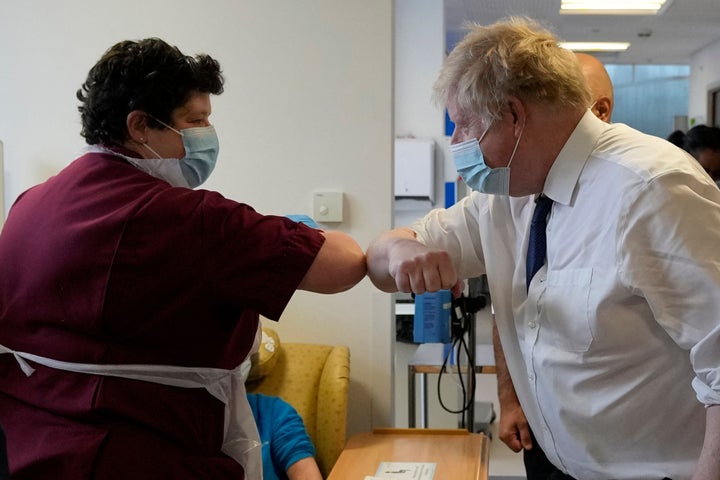
The proportion of people self-isolating after testing positive for Covid-19 has plummeted since the government announced it was no longer a legal requirement, official figures revealed today.
Barely half - 53 per cent - of people surveyed stayed at home after testing positive for the virus, according to the Office for National Statistics [ONS].
This was a sharp fall from 80 per cent in February, when Covid sufferers were still legally-obliged to self-isolate.
Boris Johnson scrapped the rules in England at the end of February - a month earlier than scheduled.
Top scientists said that it was “weird” timing and the prime minister was accused of bringing forward the rule change to appease his backbenchers and save his leadership.
“Today’s data show compliance with self-isolation advice was notably lower compared with levels reported earlier in the year.”
- Tim Gibbs, ONS
The ONS survey was carried out between March 17 and 26, nearly a month after the government changed the self-isolation rules.
At that time, people who tested positive were advised to stay at home and avoid contact for at least five full days, and to follow this guidance until they had received two negative test results on consecutive days.
The survey also found that levels of compliance with the guidance were lower among 18 to 34-year-olds [48 per cent] and 35 to 54-year-olds [53 per cent] than among people aged 55 and over [56 per cent].
They were also lower for males [49 per cent] than females [55 per cent].
However, almost all [98 per cent] respondents agreed that it is important to follow self-isolation advice.
Tim Gibbs, head of the ONS public services analysis team, said: “Today’s data show compliance with self-isolation advice was notably lower compared with levels reported earlier in the year.
“It is important to note that self-isolation was advised but not legally required during the time of data collection.
“Of those who did not fully follow self-isolation advice, the most common reason for those leaving the house was for outdoor recreation or exercise.”
The survey also found that that 55 per cent of people who left their homes during self-isolation or while they had symptoms said they had worn a mask - down from 66 per cent in February.
Some 91 per cent of respondents said they had no difficulty accessing Covid-19 tests – although the survey was carried out before free testing was ended for most people in England on April 1.
The ONS noted the survey has a relatively small number of respondents [1,286] who have self-reported their behaviour, and therefore care needs to be taken when interpreting the results.
It comes as government figures showed that the UK’s testing capability halved from 849,419 on March 31 to 422,173 on April 1.
